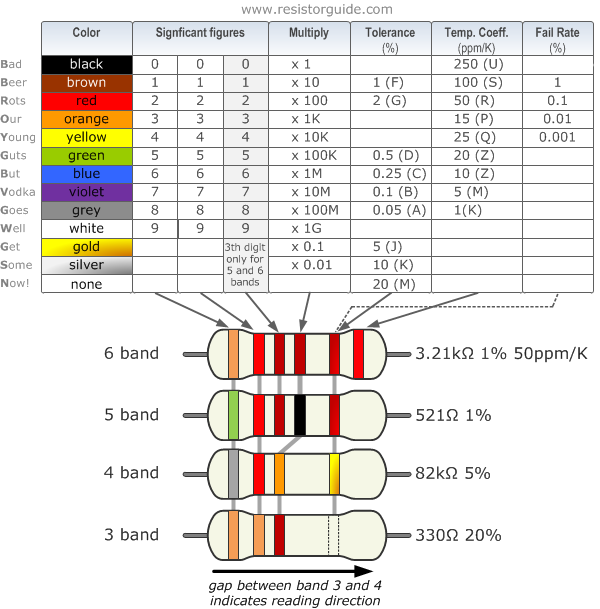
How to Read a Resistor Color Code
Resistors are an essential component in electronics, used to limit current flow and set voltage levels. One of the most common ways to identify the resistance value of a resistor is through its color code. If you find yourself staring at a resistor wondering what its value is, fear not! In this article, we will guide you through the process of decoding resistor color bands.
Understanding Resistor Color Codes
Resistor color coding is a standardized way of representing the resistance value of a resistor using different colored bands. Most resistors have either four or five color bands on them, with each color representing a specific digit or multiplier.
- Black: 0
- Brown: 1
- Red: 2
- Orange: 3
- Yellow: 4
- Green: 5
- Blue: 6
- Violet: 7
- Gray: 8
- White: 9
Additionally, there may be a sixth band that represents the tolerance of the resistor. This band is usually silver or gold and indicates how much the actual resistance of the resistor may deviate from the stated value.
Decoding the Color Bands
To read a resistor color code, follow these steps:
- Step 1: Identify the first band, which represents the first digit of the resistance value.
- Step 2: Identify the second band, which represents the second digit of the resistance value.
- Step 3: Identify the third band, which represents the multiplier (number of zeros to add to the resistance value).
- Step 4: If there is a fourth band, it represents the tolerance of the resistor.
For example, let’s say you have a resistor with the following color bands: red, green, orange, gold. Using the color code chart above, you can determine that the resistance value is 25 x 10^3 ohms, with a tolerance of +/- 5%.
Common Color Code Mistakes
It’s easy to make mistakes when reading resistor color codes, especially if you’re new to electronics. Here are some common errors to watch out for:
- Misreading the colors due to poor lighting or color blindness.
- Confusing similar colors such as brown and red, or green and blue.
- Incorrectly interpreting the tolerance band.
If you’re unsure about the value of a resistor, double-check your calculations and consider using a multimeter to verify the resistance value.
Conclusion
Reading a resistor color code may seem daunting at first, but with practice, you’ll become an expert in no time. By following the steps outlined in this article and double-checking your calculations, you can confidently identify the resistance value of any resistor you come across. Happy decoding!
Was this helpful?
0 / 0